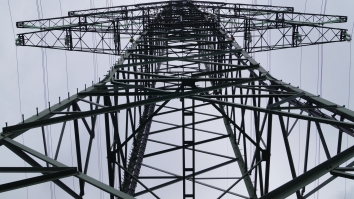Industry-wide collaboration required to advance cleaner energy deployment
Technology enables the adoption of new energy technologies to be economically feasible.
Collaboration among industry players, financial institutions, and the government is necessary in accelerating the transition to cleaner energy, according to Narsingh Chaudhary, President of Black & Veatch's Asia Pacific and India region.
In an interview, Chaudhary said that people have to realise that proper collaboration, especially with financial institutions, is required to meet the target of cleaner energy, which requires funding.
“But how you deal with those projects to make them commercially viable, having the most efficient technology and having consistent government support across the region, penalising those who continue to be the biggest emitters and ensuring that not everybody's paying the price is fundamental,” he said.
Chaudhary highlights technology as a pivotal enabler, making the adoption of new energy technologies economically feasible.
“I believe technology plays a key role in making many of these technologies possible to be adopted from an economic sense. And as a company, we have helped many of the clients, the developers and partners, sometimes even on large complex projects, to make it look like a good investment,” he cited.
Black & Veatch has been instrumental in aiding clients and partners in navigating complex projects and turning them into viable investments. Chaudhary stressed the significance of realising that “collaboration is key,” and that this unified approach could simplify the journey towards cleaner energy solutions.
He categorised renewable energy development programs, including solar, wind, and energy storage, as “low hanging fruit” and vital short-term goals, but he also mentioned the importance of not just energy generation but also its efficient utilisation, calling for enhanced grid stability and flexibility.
“So there is no short term solution,” he said, “Not every country is blessed with the same kind of natural resources, whether it's LNG or renewable. And being able to understand that every country needs maybe a different type of solution for the short term to meet them is key and fundamental.”
In the long term, Chaudhary envisions a scenario where industry leaders, technology innovators, and financial institutions collaborate to fund and develop commercially viable, efficient technologies, supported consistently by government policies.
Meanwhile, he pointed out that the transition in Asia might be longer due to heavy reliance on coal, but emphasises the potential of technologies like green hydrogen, carbon capture, and ammonia co-firing in transitioning to cleaner energy sources.
“We recognize that there is no one solution which will fit all countries in ASEAN,” he said, “I believe what is needed is ensuring that every element can be utilised.”
In terms of best practices for successful energy project implementation, Chaudhary advocates for learning from global experiences and customising solutions to local needs. He believes in leveraging the industry's collective learnings to mitigate risks and improve the efficiency of future projects.























 Advertise
Advertise







